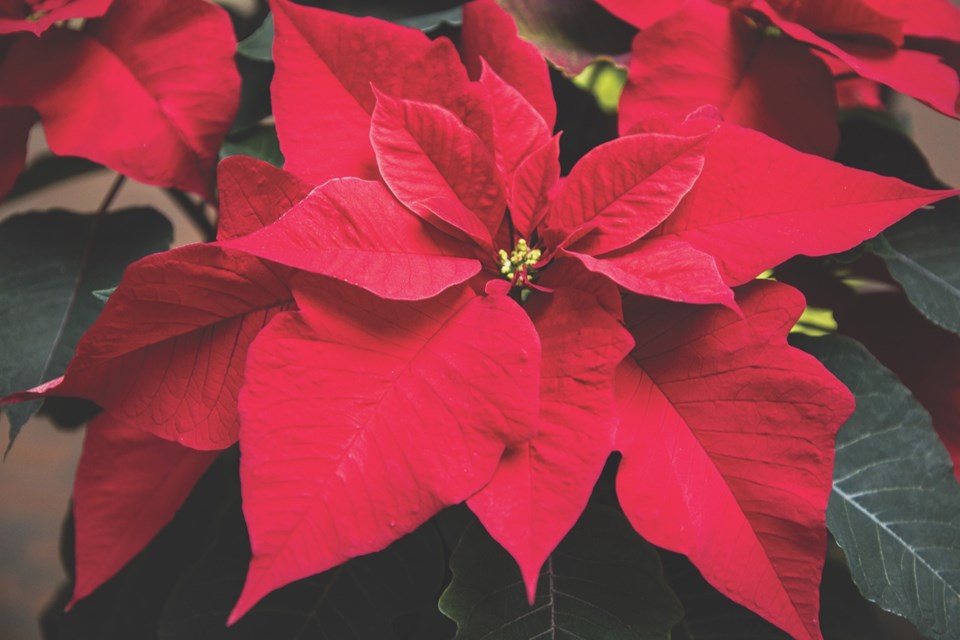Now that the cold weather has arrived, gardening expert Jim Hole turns his attention indoors. It's time to talk Christmas tree alternatives, festive florals and indoor plants.
Q: Nothing says the holidays like a poinsettia. What are the do's and dont's for this favourite Christmas-time plant?
Hole: Pick a healthy plant at the garden centre, with no wilting or dropped leaves. The actual flower of the plant is the yellow bit in the middle of the brackets (red leaves), so make sure that is intact--it'll indicate freshness. Poinsettias come in lots of colours--pinks, whites, speckled, but most people still choose red. Keep the poinsettia in a bright window during the day, but away from any draft or heat source. In the evening, you can move the plant around as decor for holiday parties etc. The plant will last longer this way.
Q: What about water and fertilizer?
Hole: No to fertilizer--the plant is finished growing. Keep the poinsettia slightly moist, but not wet. The plant can last for months--some people even plant them outside when spring comes. The Christmas cactus and Amaryllis are also popular holiday-season options.
Q: What are some alternatives for the typical Christmas tree?
Hole: If you want the smell of a real tree, without having the whole tree, try using real pine boughs in a wreath for hanging on the front door or as a table centrepiece. Mist as needed to keep it from drying out. People often use a Norfolk Pine as a substitute for a larger tree--this plant is like a tropical, and will dry out quickly. It's also bad for spider mites, but it offers the look of a Christmas tree. When space or budget is tight, you can even decorate a leafy indoor plant or pineapple top with small decorations.
If you do choose a real-life Christmas tree, make sure the needles aren't falling off--that means the tree is already dried out. When you get it home, cut a bit off the base of the tree--a fresh cut allows more water in. And always keep the water dish full.
Winterscaping is a big thing too, so use pine or spruce boughs, pine cones and decorations--big silver, gold or coloured balls--in an outdoor planter. That can last through the season on your front step.
Q: Indoor plants can be high-need, or low-maintenance. What are some basic tips to get us started?
Hole: Having enough light is key. Low light doesn't mean no light. Don't over-water, that can kill a plant quickly. Most plants need to be kept moist, but no more than that. Also, remember that fertilizer isn't plant food, sunlight is plant food. Fertilizer can be a building block for plants, but overall, if you give them light, they're happy.



